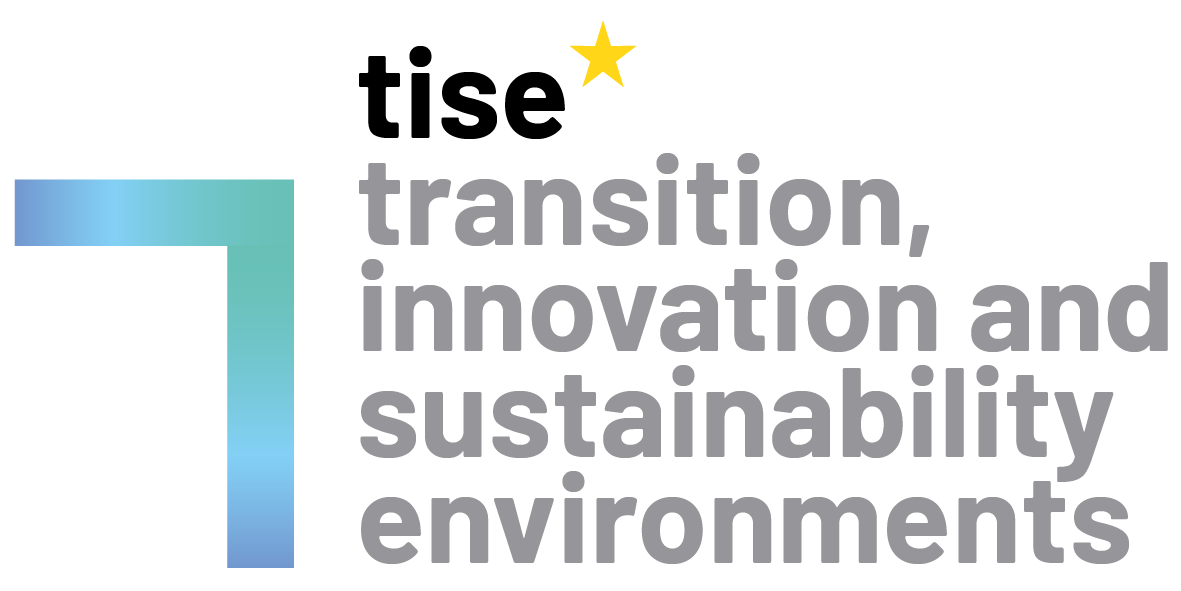
Special Opportunities
As the multidimensional knowledge integration lies at the heart of the TISE program, it manifests itself in several points during the course of TISE and is embedded within the following innovative program features:

Transdisciplinary Field Research Training (TFRT)
What means transdisciplinarity

Transdisciplinarity, in its essence, aims at the generation of “socially robust knowledge” (Gibbons and Nowotny 2001; Häberli et al. 2001; Nowotny 1993) by multidimensional knowledge integration when dealing with complex and societally relevant problems in a mutual learning process between science and key stakeholders from practice (Scholz and Steiner 2015).
The Objectives of TFRT
The focus of the Erasmus Mundus European Master of Excellence Transition, Innovation and Sustainability Environments, TISE is on sustainable and resilient societal, business and industry processes and structures. Through its strong transdisciplinary approach (i.e. a method guided by mutual learning processes between science and practice), students on this program gain a comprehensive understanding of relevant coupled human-nature-technology systems (respectively ‘human environment systems’), positive and negative mechanisms and effects of transitional processes (including underlying obvious and hidden rebound effects), and interventions together with the innovation potential therein. To facilitate the transdisciplinary approach hybrid learning spaces are being developed. They allow for examining how digital, physical and hybrid spaces can improve the modeling of complex relations to enhance the quality of decision-making. In the transdisciplinary collaborative project-work, the learning spaces are used for workshops by the mixed teams (science-society), where practical and relevant challenges are identified and systemically analyzed (combined stakeholder and system analyses), statistical data and network analyses are carried out and the results are consolidated and interpreted. Consequently, a comprehensive knowledge integration is the ultimate goal.
TFRT comprises a central and innovative part of the TISE curriculum. It runs parallel to the regular coursework from the third semester to the fourth, is chaperoned collaboratively by all consortium partners and takes place within newly developed Experimental Learning Spaces. Mode 2 Transdisciplinarity has become a third mode of doing and utilizing science, showing its transition from pure disciplinarity or interdisciplinarity. This means that transdisciplinarity with its underlying methods does not only cross the boundaries of traditional disciplines. At its core it aims toward “doing science for society” – a goal that can only be achieved by an extended mutual learning between science and society, which is based on a targeted multi- or interdisciplinary research, moderated by a multi-stakeholder discourse and facilitated by science and practice relation. Thus, the key outcome of a transdisciplinary process is the development of a socially robust orientations about a specific real-world problem that are usually ill-defined, complex, but socially highly relevant. A fundamental principle of transdisciplinarity is that representatives from science and practice collaborate on an equal footing throughout the course of the entire process (incl. joint definition of the problem, representing the problem, and developing strategies for transforming the problem). The ideal form of transdisciplinarity contains the co-leadership of a science and a practice leader. Accepting the otherness of the other is seen as a prerequisite for transdisciplinary mutual learning.
What should be achieved during TFRT?
Transdisciplinarity processes may serve for capacity building among all participants; consensus building about the main problems (including their genesis and transformation), (analytic) mitigation of emerging conflicts in a process of sustainable transformation, and political legitimation. Specifically, a main role of science is to develop knowledge and theories that allow for more clearly describing the processes in social, technical, and biophysical systems and their interactions. In other words, scientists provide theories and method-based evidence. In their turn, practitioners deliver “contextualized” practical experience related to a specific problem. Within the whole transdisciplinary process practitioners may follow their interests. However, it is expected that all participants can make some level of commitment to sustainability. It is important to understand that transdisciplinary processes dealt with a special type of problems which can be solved by other approaches (such as consultancy) which are “less expensive.” The TISE-TRFT study will deal with transdisciplinary problems.

Experimental Learning Spaces
About
These spaces are a collaborative infrastructure, in which transdisciplinary teams from university and practice (e.g. students, teachers, mentors, practitioners, scientists) experiment with the help of digital and analogue tools (including adaptive and simulation-based learning, augmented and virtual reality, digital playful learning and edutainment, inverted classrooms, digitally extended makerspaces, digital planning tools, feedback digitization). In the process, they collaboratively develop portfolios of institutionally or organizationally relevant transdisciplinary project plans achieved through interuniversity cooperation and between science and society that can contribute to challenges associated with SDGs.
For the integration of knowledge of the different views, disciplines, subjects and methods, several further innovative measures have been put into place:
- The Student Conferences: refer to events consisting of clearly defined time periods (three weeks) at the beginning of the first semester (commencement weeks) and at the end of the second, third, and fourth semester (final presentation weeks.) They are part of the continuously proceeding cross-disciplinary knowledge integration. In particular their goal is related to: (1) Working in heterogeneous, diverse teams on problem solving strategies; (2) Fostering science to practice transfer through applying knowledge in simulation exercises and management games and in specialized hands on workshops; (3) Gaining additional skills and competences through extra coursework (co-creative methods, design thinking, design for transition towards a sustainable future); (4) Training intercultural competencies; (5) Presenting results in a conference setting to heterogeneous audiences.
- Team teaching and state of the art didactical methods: All consortium members teach in all locations in order to create a continuous cross-referencing system, linking and interrelating the different disciplines serving the purpose of integration. Furthermore, TISE relies on the use of state of the art didactical methods that reach from game based learning to different forms of simulation to movie education, or inverted classrooms, and digitally extended makerspaces.

Design Methods
About
In addition to the above, associated partner Scuola del Design/Politecnico Milano (Poli.Design, I) will provide courses in design as creative methodologies to the program. In particular, this coursework will center on Design for Sustainability and more precisely on Design for Transition towards a Sustainable Future, starting at the beginning of the program, during the SC/commencement week. The specific modules are centered on Design for Transition and take into account the program of the other partners, but also focus on the evolving nature of design in light of the uncertainty. It will provide a basis on design thinking methods and adapt them to the themes of future instability and complexity management

